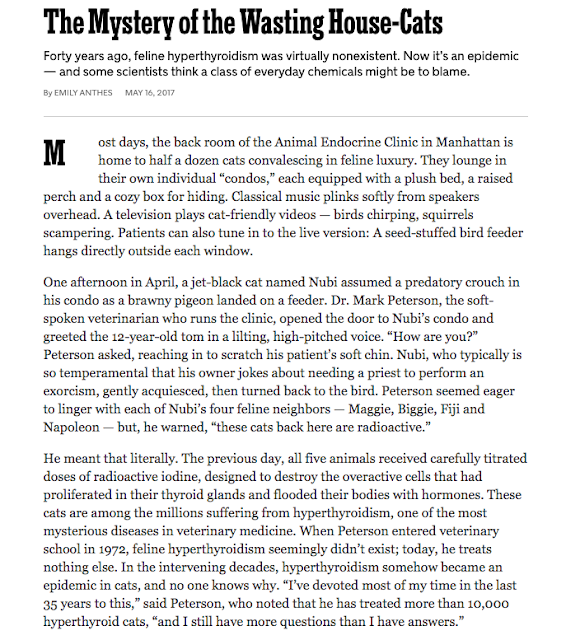SCHAUMBURG, Illinois) July 29, 2021— The American Veterinary Medical Association (AVMA) today honored Dr. Mark Peterson, owner and director of the Animal Endocrine Clinic in New York City, as the winner of the 2021 AVMA Lifetime Excellence in Research Award.
“Dr. Peterson has made extraordinary contributions in veterinary research and in our understanding of how endocrine disorders are diagnosed and treated in animals, resulting in the well-deserved respect and admiration of veterinary professionals throughout the world,” said Dr. Douglas Kratt, president of the AVMA. “It is a tremendous honor to announce his selection as this year’s AVMA Lifetime Excellence in Research Award winner.”
For more than 45 years, Dr. Peterson’s clinical and research efforts have been directed toward advancing the understanding of naturally occurring endocrine disorders of cats and dogs, including hyperthyroidism, hypothyroidism, diabetes mellitus, calcium disorders and adrenal diseases. Over the last decade, he has focused his clinical research efforts on various aspects of feline hyperthyroidism, a disease he first reported in 1979.
Dr. Peterson has published more than 600 journal articles, book chapters and research abstracts over the course of his career. Recently, he served as co-editor of the textbook Feline Endocrinology—the first book devoted exclusively to endocrine diseases of the cat. With more than 600 lecture presentations to his credit, Dr. Peterson remains a popular speaker at national and international veterinary colleges and scientific conferences.
Dr. Peterson served as head of endocrinology and nuclear medicine at The Animal Medical Center in New York City for 30 years (1979-2009), and has held positions as adjunct professor of medicine at the University of Pennsylvania School of Veterinary Medicine (1996-2000), associate professor of radiology at the Weill Medical College of Cornell University (1983-2005), and assistant professor of medicine at the Cornell University College of Veterinary Medicine (1982-1988). He currently serves as adjunct professor of medicine at the Cornell University College of Veterinary Medicine, where he teaches and collaborates with several investigators.
In addition to advancing the practice of internal medicine as a researcher and professor, Dr. Peterson is recognized for providing the highest standard of patient care as a clinician. As director and owner of the Animal Endocrine Clinic, Dr. Peterson is an active clinician, providing comprehensive endocrine evaluations for his patients while also conducting clinical research studies. During his decades of work as a clinician and instructor at the Animal Medical Center in New York City, Dr. Peterson inspired and educated hundreds of interns and residents. His mentorship of these individuals has played a major role in their successful career advancement and helped to create the next generation of clinician scientists.
Dr. Peterson is also very involved in organized veterinary medicine and veterinary continuing education. He was the founding member and first president of the Society of Comparative Endocrinology. He served on the executive board of the New York City Veterinary Medical Association (VMA) from 2006 to 2012, during which time he was also the head of the continuing education program committee, and served as president of the New York City Veterinary Medical Association from 2010 to 2011.
“I’m extremely honored to be the recipient of this year’s AVMA Lifetime Excellence in Research award,” said Dr. Peterson. “I’d like to thank the AVMA for this prestigious award and for believing that my research contributions are worthy of this great honor. My hope is that my legacy will show that it’s possible to be a good practicing clinician who can also conduct valuable clinical research, even in a private practice setting. I’d encourage all veterinarians to keep asking questions about how to improve patient care and to use clinical research to help get the answers we all need.”























